DuckTales' Moon theme

We could go on for a while about all the reasons that Capcom's NES DuckTales game was fantastic - top-notch 8-bit visuals, the fun pogo-jumping play mechanic, sprawling levels, nonlinear gameplay, and lots of hidden secrets, to name a few - but the single greatest thing about the 1989 platformer might be its music, especially the theme to the Moon level. Opening with a calm subtlety, the tune soon explodes into an incredibly energetic, upbeat anthem that rocks as much as anything you'll ever hear coming out of your NES. It's no wonder that the theme has become a favorite of chip-tune enthusiasts everywhere.
Devilish dialogue
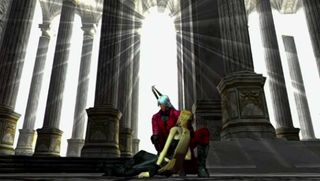
Oh, Devil May Cry, you so crazy. Not only does the game deliver intensely stylish gun- and sword-based action, wild combos, and a cool-as-a-cucumber hero in Dante, but it also provides some grade-A cornball dialogue with an extra helping of cheese. Were not sure which part is more ludicrous: the scene where Dante meets the griffon and tells him to "Flock off, feather-face!" or the ending scene in which Dante melodramatically proclaims that "I should have been the one to fill your dark soul with LIIIIIIIIGHT!!! (Light... light... light... light... light!)" It's OK, Dante. We won't hold it against you.
The mutant politburo
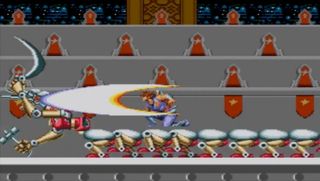
The arcade version of Strider is a pretty crazy game. It starts with the protagonist, Hiryu, hang-gliding into Russia, and he then proceeds to jaunt all over the world, using his powerful cipher blade to chop through everything from a stereotypical pirate to a robotic gorilla to a herd of dinosaurs that have taken over the Amazon jungle, after which he heads off to a space station where he defeats a flying geezer who looks like the emperor from Star Wars. And the gameplay - which has you climbing walls, walking on ceilings, and battling in zero gravity - gets pretty out-there, too. The weirdest part, however, comes at the end of the first level, where Hiryu encounters what appears to be the Soviet parliament; upon seeing Hiryu, the politicians leap from their seats and combine into a giant hammer-and-sickle-wielding robotic centipede. It doesnt get much stranger than that.
Crossover madness
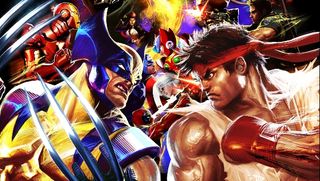
Is there anything more exciting than when two beloved franchises merge into one? Nah, not really. Capcom has been perfecting the art of the video game crossover since the 90s, delivering madcap action in titles such as X-Men vs. Street Fighter, Marvel Super Heroes vs. Street Fighter, Marvel vs. Capcom, Capcom vs. SNK, Capcom Fighting Evolution, Street Fighter X Tekken, and Tatsunoko vs. Capcom, as well as their various sequels. Frequently the result was explosive, over-the-top tag-team chaos that made Capcom's regular fighting games look like backyard brawls. And lets not forget that there have even been non-game crossovers, too, such as the recent Sonic/Mega Man comics or the time that the Street Fighter characters enlisted in the G.I. Joe action figure line. Actually, those toys were terrible; feel free to pretend that didnt happen.
Midnight Bliss
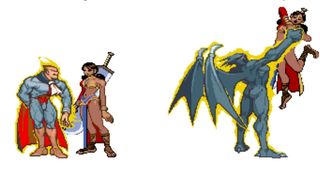
Street Fighter gets all the attention, but Capcom is home to numerous other fighting-game series. One of the best is Darkstalkers, which stars a cast of classic horror-movie monsters as seen through Capcom's distinctive artistic filter. Vibrant anime-style visuals and insane special moves are the order of the day; one of the most bizarre is vampire Dimitri Maximov's Midnight Bliss super attack, which, if it connects, results in his opponents - even the guys - being transformed into curvaceous ladies of the night. Ever wondered what Frankenstein's monster or a waddling sasquatch would look like as a hot babe? No? Well, Midnight Bliss gave you the chance anyway. Even non-Darkstalkers characters got a gender-bending makeover when Demitri appeared in the crossover fighting game Capcom Fighting Evolution.
Piledriver!

Beating the crap out of punk criminals is fun, but you know what's even better? Grabbing one of those thugs, jumping into the air, flipping him over, and crashing down on top of him while driving him into the concrete. Such was the appeal of Mike Haggar's mighty piledriver, which the mustachioed mayor of Metro City put to good use in in the 1989 beat-em-up Final Fight. Politicians may have a bad reputation, but there's no doubt that wrestler-turned-street-fighter-turned-vigilante Haggar was delivering on his campaign promise to fight crime when he personally hospitalized countless members of the Mad Gear gang. More recently Haggar has been seen piledriving the likes of Dr. Doom, Tyrant, and a Sentinel.
Mango Sentinels
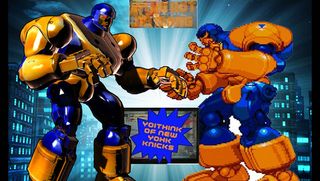
The Mango Sentinel is a nickname given to the orange-and-blue alternate color scheme of the Sentinel robot in Marvel vs. Capcom 2, but it's also so much more. It exemplifies the sheer enthusiasm that Capcom's fighting games often generate, as the name fell into vogue - alongside a number of other phrases, mainly involving potato chips, ice cream, New York sports teams, and lots of profanity - after a particularly lively tournament held back in 2007, which subsequently spread like wildfire across the Internet. Not one to let such notoriety fade away for too long, Capcom revived the Mango Sentinel when the gargantuan robot returned a years later in Marvel vs. Capcom 3.
Clover Studio

Capcom is known for its franchises and sequels, but it's also known for its creativity and originality. This pioneering spirit is what led to the formation of one of Capcom's most renowned development groups, Clover Studio, which was founded in 2004 under the guidance of Viewtiful Joe creator Atsushi Inaba, Resident Evil creator Shinji Mikami, and Devil May Cry director Hideki Kamiya. In addition to continuing the Viewtiful Joe franchise, the group was responsible for creating the astonishing adventure game Okami and the divisive brawler God Hand, but Capcom unfortunately shut down the studio in 2007. However, Clovers influence lives on, not only through its beloved IPs (see the recent Okami HD remake), but through the studios spiritual successor, Platinum Games, which has employed much of the same talent to deliver stylish titles such as MadWorld, Bayonetta, and Metal Gear Rising: Revengeance.
Motorcycles with chainsaws
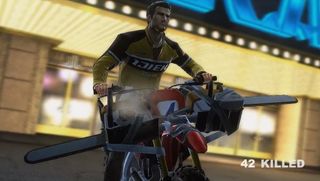
One of the coolest things about the Dead Rising games is how pretty much anything can be used as a weapon. Better yet, you can combine items to make dozens of combo weapons including an electric rake, exploding meat, and a plate launcher. But best of all? Being able to customize a motorcycle with a pair of chainsaws - one sticking out to the left, the other to the right - so you can slice through the undead hordes in Dead Rising 2. Hero Chuck Greene may not have covered wars, you know, but at least he can put his championship motocross skills to use in the defense of Fortune City. Disclaimer: Under ordinary circumstances wed have to say that riding around completely exposed on a motorbike while whirling implements of death are only a few inches from your limbs is a spectacularly bad idea, but in a zombie apocalypse anything goes.
Arthurs boxer shorts
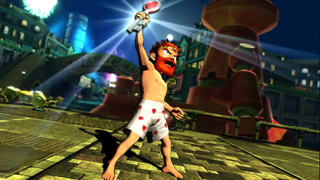
Pretty much anybody can fight bad guys when fully clothed, but it takes a real mans man to battle zombies, demons, and, um, vomiting pigs when you're wearing nothing but your beard and your boxer shorts. Admittedly, Arthur - the protagonist of Capcom's Ghosts'n Goblins series - isn't running around in his skivvies by choice; that only happens when he takes a hit from an enemy and his whole freaking flimsy suit of armor pops off his body. Seriously, how lousy is this armor that it completely flies off just from getting hit by a bird or whatever? It's almost as if Arthur is some sort of weird exhibitionist who likes running around almost starkers. Fun fact: Even though it's commonly believed that Arthurs boxers feature a heart pattern, they are, in fact, decorated with strawberries.

